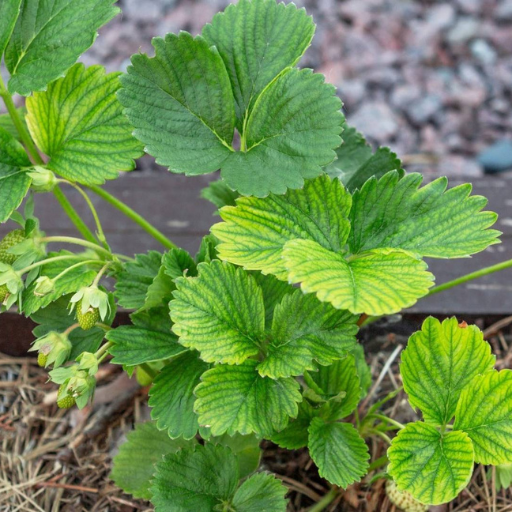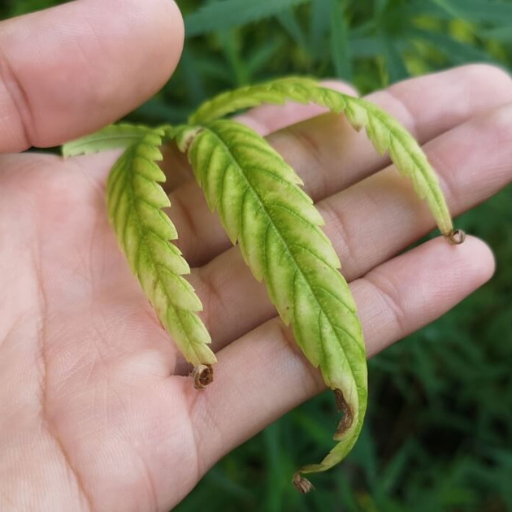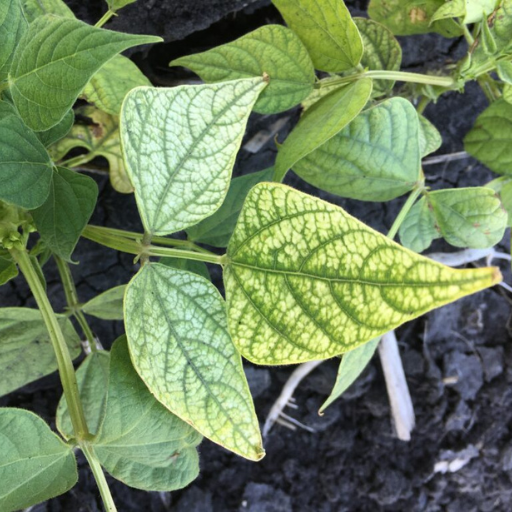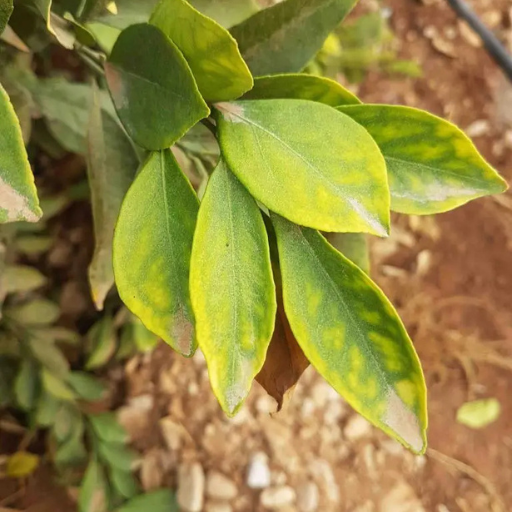Although required in small quantities, zinc is a trace element that plays an indispensable role in plant growth and development. This micronutrient is crucial for a multitude of biological processes, including enzyme activation, protein synthesis, and hormonal balancing. Its presence or absence can significantly impact the health and productivity of plants. In this blog, we will explore the vital functions of zinc in plant physiology, how it influences various growth aspects, and the signs of zinc deficiency. By understanding zinc’s critical contributions, gardeners, farmers, and plant enthusiasts alike can better manage the nutritional needs of their plants to ensure optimal growth and yield.
What is the Role of Zinc in Plant Growth?

The role of zinc in plant physiology
Zinc deficiency in plants can harm numerous processes including metabolism, transcription and translation. These metabolic processes range from protein synthesis to carbohydrate metabolism. Chlorophyll and protein synthesis can not occur in the absence of zinc, as it is a crucial component in both of these processes. Additionally, zinc is required to produce auxins, which are essential growth hormones in plants, as they stimulate cell elongation and division. The significance of zinc in these processes highlights its role in promoting healthy growth and development of plants and even root development and the tolerance of plants towards environmental stress.
The role of zinc in increasing crop yields
Zinc is a critical factor in boosting crop yields as it plays a fundamental role in various aspects of plant development. It helps in the effective absorption of nutrients, increases the stress tolerance capability of plants, and increases resistance to diseases, thus resulting in increased quantity and quality of production. In the areas where soil scarcity exists, such micronutrient deficiency results in plant stunted growth and chlorosis hence lowering the numbers of both seeds and fruits. The appropriate supply of zinc enables a variety of enzymatic actions, as well as the formation of proteins that are critical for plant metabolism. It is, therefore, of great importance to maintain adequate supply of zinc by using soil fertilizers or foliar application in order to obtain sustainable and improved crop yields. This approach not only addresses micronutrient deficiency but also improves food security.
Zinc enhances plant growth
Zinc is an important micronutrient which has diverse functions including stimulating the synthesis of several growth hormones and proteins necessary for plant development. It is also involved as a co-factor in critical biological processes like DNA synthesis and energy metabolism needed for cell proliferation and differentiation. Zinc’s bioavailability boosts the synthesis of leaf chlorophyll, enhancing photosynthetic activities and nutrient resources for growth. In addition, it also regulates the output of hormones assisting with growth in conditions of environmental stress. In conclusion, using adequate amounts of zinc in soil will not only encourage proper plant growth but also enhance disease and climate resilience of the plants.
What are the Symptoms of Zinc Deficiency in Plants?
Common symptoms of zinc deficiency
In plants affected by zinc deficiency, other typical characteristics include the presence of stunted plants and smaller leaves, which are commonly being narrow or short. Interveinal chlorosis, another common characteristic, is where the leaf lamina turns yellow between the veins but remains green on the veins. Furthermore, newly developed leaves may appear as abnormally twisted and/or misshapen, and excessive bushiness of a plant’s growth form owing to short internodes may result. In more drastic cases, some leaf bronzing with necrotic spots is also developing, and in very extreme cases, even dieback occurs. However, it is essential to be able to identify these symptoms in the early stages if risk management measures such as zinc fertilization to the soil are to be effective.
Zinc deficiency affects root development
Zinc deficiency leads to an even more considerable restraint in rooting volume and growth, due to the interfered cell division and elongation caused by the zinc deficiency. Such limited root development leads to a limited water and nutrient absorption ability from the soil, exacerbating the deficiency’s effect on plant health. It has the implication that such attenuation in nutrient uptake may further negatively affect the plant’s growth, exposing it to more environmental stress with a lowered yield potential. It is, therefore, important to uphold sufficient soil zinc levels in order to support good root structure and preservation of the plant.
The relationship between zinc deficiency and crop development
Zinc deficiency has a negative effect on the crop yield and reduces crop quality. It may also cause maturity delays, leading to fruits and grains ripening unevenly. The deficiency also affects so many physiological processes, such as enzyme action and hormone balance, that are needed in adequate amounts for proper crop production. Irrespective of the visible vegetative mass, zinc deficient plants are likely to produce less biomass and form lesser amounts of chlorophyll and affect photosynthetic processes. In addition, zinc is essential for pollen development, and its deficiency may impact pollen germination, thereby influencing fruit set and seed production. Solutions to zinc deficiency are necessary for productivity of crops and food sovereignty.
How Can Zinc Levels Be Managed in Soil?

Which fertilizers are able to assist the plant in utilizing the zinc present in the soil?
Various Fertilizers are available for the enhancement of zinc utilization in soil. Zinc sulfate is typically used because of its high solubility and efficiency in dealing with zinc deficiency. In the case of zinc EDTA chelated zinc fertilizer, superior uptake efficiency is also more beneficial in alkaline and calcareous soils. Zinc oxide is another option, though it offers a lower solubility level. The disadvantage of zinc oxide is that the released zinc it contains is supplied slowly allowing it to be useful for the long-term maintenance of soil. In order to optimize plant uptake and crop performance, it is necessary to choose the suitable type of fertilizer according to the soil conditions and the crop needs.
Assessing zinc concentration in soils
To assess zinc concentration in soils, a number of tools can be used to determine the amount of available zinc required to grow a crop. Soil testing falls under this routine and involves the collection of soil samples followed by their analysis using DTPA method which employs Diethylene Triamine Pentaacetic Acid as a extractant that is able to determine the amount of zinc available in the soil. Also, field screening can be carried out using portable X-ray fluorescence (x-ray fluorescence (XRF) which gives rapid and non-destructive results. It is also important to evaluate pH of soil, its organic matter as well its texture since these factors can affect the amount of zinc present in the soil. Calcium management, Prevention of resource overuse, and timely management of stocks allow effective and profitable zinc utilization and maintenance of plant zone fertility.
Strategies that Promote Zinc Homeostasis in Plants
The plants tend to utilize these many strategies to maintain internal balance and assure optimal zinc levels. One such strategy is improving the root’s structure, thus increasing the root’s surface area and increasing zinc efficiency. In this case, the application of mycorrhizal fungi which is known to form symbiotic association with the plant roots and enhance nutrient absorption including zinc is also a viable strategy. Further, the application of foliar sprays of zinc is a wise and covers the limitations of the soil and corrects zinc deficiency quickly which improves zinc homeostasis. The appropriate application of soil amendments and the selection of more zinc-efficient plant types will further reinforce the balance of zinc by enhancing root absorption in various soils. These collectively help achieve the necessary ranges of zinc required for the normal plant functions and their growth.
What Happens When There is Excess Zinc in Plants?

Symptoms of zinc toxicity
Several symptoms can manifest when plants experience zinc toxicity, potentially hindering their growth and development. A common symptom is chlorosis, where leaves develop yellowing between the veins due to disrupted iron metabolism. This is often more pronounced in younger leaves. In severe cases, necrotic spots may appear on the leaves, leading to tissue death. Excess zinc can also cause stunted growth, as the overall development of the plant is inhibited. Additionally, root systems may become poorly developed or discolored, further affecting the plant’s ability to uptake nutrients and water. These symptoms collectively indicate an imbalance in nutrient levels, necessitating immediate corrective measures.
Excess zinc affects plant nutrition
Excess zinc in plants disrupts essential nutrient balance by interfering with the uptake and absorption of other vital micronutrients such as iron, manganese, and copper. This imbalance can lead to deficiencies, even if these minerals are present in the soil. Zinc toxicity impacts the plant’s metabolic processes and enzymatic functions, as these micronutrients play crucial roles in photosynthesis and various other biological pathways. The excess zinc effectively competes with and displaces these essential nutrients at important biological sites, exacerbating nutritional deficiencies and further compounding the symptoms of toxicity. Addressing this imbalance is critical for restoring plant health and ensuring optimal growth conditions.
Crops that are more susceptible to zinc toxicity
Crops that are more susceptible to zinc toxicity include corn, beans, and spinach. These plants are particularly sensitive to elevated zinc levels, which can hinder their ability to absorb other necessary micronutrients and affect their overall health and yield. In corn, high zinc concentrations may result in poor root development and decreased chlorophyll content. Beans are vulnerable to zinc-induced iron and manganese deficiencies, leading to chlorosis and reduced leaf growth. Spinach is highly sensitive to zinc toxicity, which can cause severe leaf necrosis and stunted growth. Managing soil zinc levels is crucial to maintaining the health and productivity of these susceptible crops.
How Do Different Plants Respond to Zinc Availability?

What are hyperaccumulating plants and what is their response to zinc?
Hyperaccumulating plants are some of the most interesting species since they have the ability to survive and grow in soils high in zinc due to their ability to extract and store zinc in their tissues in a higher amount than in any other plant. Whenever a soil is full of metals and is toxic for most of the plants, these plants possess a physiological response in a form of specialization so as to tolerate such soils and even have a beneficial effect. Similar adaptations include the capacity to sequester metals like zinc in vacuoles for detoxification and the production of transport proteins that are involved in the uptake and movement of these metals to different parts of the plant. Such hyperaccumulators do not just struggle but even do well under such conditions and hence they have a huge potential for bioremediation—pulling zinc from toxic soil and thus doyng its clean up.
What Is The Effect Of Zinc On The Absorption Of Other Elements By Plants?
As far as how zinc affects plant uptake of other nutrients is concerned, it can be observed that zinc is significant in the process of interaction and balance of different nutrients within the plant system. When consumed in excess amounts, zinc can inhibit the absorption of other essential microelements such copper, manganese and iron by inhibiting related transport mechanisms or by modifying root structure and function. Such competition can cause a deficiency of these nutrients, which are necessary for important processes such as photosynthesis and enzyme activity. Thus, controlling the concentrations of zinc at optimal levels ensures that plants absorb the required nutrients in the most balanced ratio possible, this will help to maximize growth of the plants.
Zinc contribution in higher plants when compared to that of other essential elements, how is their contribution different?
Based on my comprehension, zinc is one of the most important micronutrient in higher plants and performs the work which is required and is specific unlike other essential nutrients. Zinc is necessary for forming proteins and controlling many enzymes affecting growth, development, and hormone production, as well as steady membrane structure. Unlike macronutrients nitrogen or phosphorus, which tend to be present at much higher concentrations, zinc’s role is quieter yet important in areas like activating enzymes and auxin metabolism processes. Thus both deficiency and excess of zinc restrics the overall growth, yield and proportion of diseases infection. However, this does not mean that all nutrients are of equal importance, for example zinc is a prime structural as well as regulatory component for plants.
Reference sources
- The importance of zinc in plant growth – A review: This study discusses zinc’s role in seed production, growth regulation, and disease resistance, highlighting its critical importance in plant nutrition. Read more here.
- Role of zinc in plant nutrition – A review: This review covers how zinc deficiencies can stunt plant growth and affect various physiological processes, emphasizing zinc’s essential role as a micronutrient. Read more here.
- Regulation of the adaptation to zinc deficiency in plants: This article explores how plants adapt to zinc deficiency, providing insights into zinc’s critical functions in plant health. Read more here.
These sources should help validate the importance of zinc in plant growth for your readers.
Frequently Asked Questions (FAQs)

Q: Why is zinc considered essential for the mineral nutrition of higher plants?
A: Zinc is essential for the mineral nutrition of higher plants because it is crucial for enzyme function, DNA synthesis, and overall plant metabolism, impacting growth and development.
Q: How does zinc deficiency impact the efficiency in crop plants?
A: Zn-deficient plants exhibit reduced efficiency in crop plants, leading to lower yields and poor quality produce. Zinc deficiency can also affect the plant’s ability to utilize other nutrients, such as iron and zinc.
Q: What are some common mechanisms in plants that respond to zinc levels?
A: Plants may employ various mechanisms in response to zinc levels, including activating zinc transporters to enhance zinc uptake and the production of phytosiderophores to improve nutrient absorption from the soil.
Q: How can I improve zinc nutrition in my soil and plant health?
A: To improve zinc nutrition, consider applying zinc fertilizers, testing soil and plant tissue for zinc content, and ensuring proper pH levels, as highly acidic or alkaline soils can affect zinc availability.
Q: What is the role of zinc finger proteins in plants?
A: Zinc finger proteins play a crucial role in plant cell regulation and function, acting as transcription factors that respond to zinc levels and influence gene expression related to growth and development.
Q: How does the application of zinc affect plant growth?
A: Zinc application can significantly enhance plant growth by correcting zinc deficiencies, improving photosynthesis, and promoting better root development, ultimately leading to healthier and more productive plants.






